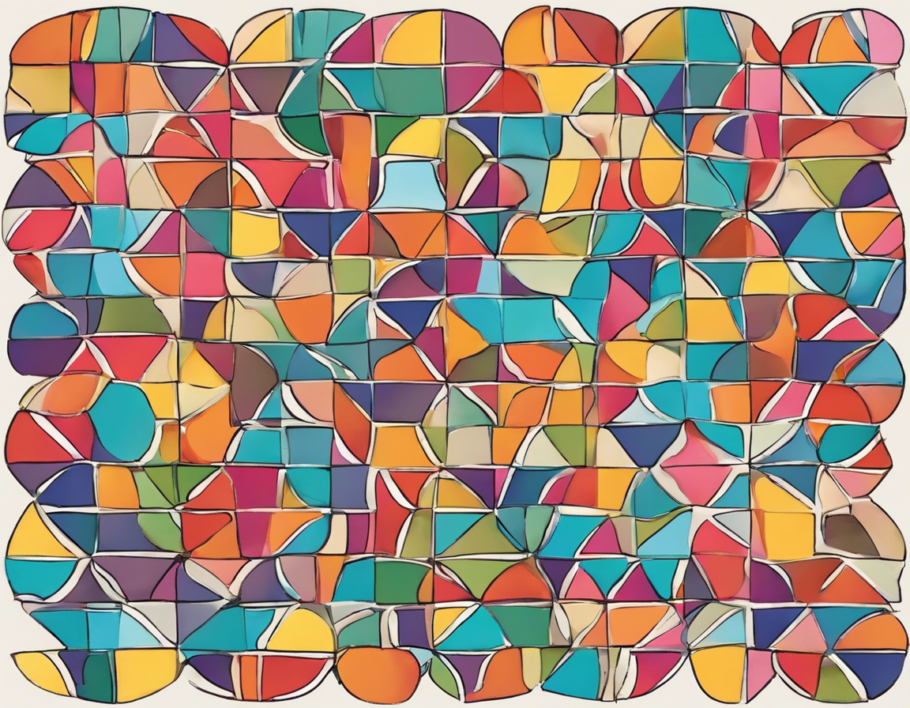As a graphic designer or illustrator, you understand the importance of using color and pattern to bring your designs to life. One aspect of design that often gets overlooked is the fill color and pattern of closed shapes. Fill color and pattern can significantly impact the overall look and feel of your design, so it’s important to have a good understanding of how to use them effectively.
In this comprehensive guide, we will explore the various aspects of fill color and pattern in closed shapes, including how to choose the right colors and patterns, how to apply them in your designs, and some common mistakes to avoid.
Choosing the Right Fill Color:
When it comes to choosing the right fill color for a closed shape, consider the following:
1. Color Theory: Understanding the basics of color theory can help you choose the right fill color for your design. Consider factors like color wheel relationships, color harmony, and the psychological effects of different colors.
2. Branding and Identity: If you’re creating a design for a brand or company, make sure to use their brand colors in the fill of your shapes to maintain consistency and reinforce their identity.
3. Contrast: Ensure that there is enough contrast between the fill color of your shape and the surrounding elements to ensure readability and visual impact.
4. Context: Consider the context in which your design will be viewed. The fill color that looks great on a computer screen might not look the same when printed or viewed on a different device.
Applying Fill Patterns:
In addition to solid fill colors, you can also use fill patterns to add texture and visual interest to your closed shapes. Here are some tips for using fill patterns effectively:
1. Scale and Proportion: Consider the scale and proportion of your fill pattern in relation to the size of the shape. A pattern that is too small or too large can overpower the design.
2. Consistency: If using multiple shapes with fill patterns in a design, make sure to use consistent patterns to create a cohesive look.
3. Contrast: Just like with fill colors, ensure there is enough contrast between the fill pattern and the background or surrounding elements for the pattern to stand out.
4. Direction: Pay attention to the direction of the fill pattern. Horizontal or vertical patterns can create different effects and moods in your design.
Common Mistakes to Avoid:
When working with fill color and pattern in closed shapes, there are some common mistakes that designers often make. Here are a few to watch out for:
1. Overcomplicating: Avoid using too many colors or patterns in a single design, as this can make it look cluttered and overwhelming.
2. Ignoring Accessibility: Make sure that the color and pattern choices you make are accessible to all users, including those with color blindness or visual impairments.
3. Forgetting About White Space: Don’t forget to leave some white space in your design to give the eyes a place to rest and to create balance.
4. Using Distracting Patterns: Be mindful of using fill patterns that are too busy or distracting, as they can take away from the overall message of your design.
Frequently Asked Questions (FAQs):
1. What is the difference between fill color and stroke color in design?
In design, the fill color refers to the color inside a closed shape, while the stroke color refers to the color of the outline or border of the shape.
2. Can I use multiple fill colors in a single shape?
In most design software, you can only apply one fill color to a closed shape. However, you can create the illusion of multiple colors by using gradients or patterns.
3. How can I create my own custom fill patterns?
Most design software allows you to create custom fill patterns using shapes, lines, and other design elements. Simply create your pattern, select it, and save it as a custom pattern for future use.
4. Are there any online resources for finding inspiration for fill colors and patterns?
Yes, there are plenty of online resources like Pinterest, Dribbble, and Behance where you can find inspiration for fill colors and patterns. You can also create mood boards to gather your favorite color and pattern combinations.
5. What should I consider when choosing fill colors for a dark background?
When choosing fill colors for a dark background, make sure to use colors that contrast well with the dark background to ensure readability. Bright or bold colors often work best on dark backgrounds.
In conclusion, fill color and pattern play a crucial role in enhancing the visual appeal and effectiveness of your designs. By understanding how to choose the right fill colors and patterns, apply them effectively, and avoid common mistakes, you can create visually stunning and impactful designs that captivate your audience.

